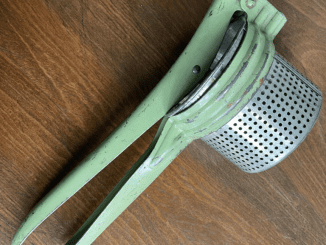Picture yourself on the wooden deck of an old navy ship, with hair wet from the sea and the sea air blowing through it. The sound of the waves hitting the ship’s hull creates a rhythmic backdrop, and in the midst of the working sailors, a short, sharp, and melodious whistle pierces the air.
This is the boatswain’s call, a small yet powerful tool that has been an integral part of naval history for centuries. The boatswain’s call, also known as the bosun’s whistle, has a rich history dating back to 1485 when it was first used as an emblem of rank for the Lord High Admiral of England.
This small, non-diaphragm type whistle consists of several parts, including a narrow tube called the gun, a spherical metal piece called the buoy, and a flat metal piece called the keel, which holds the call together. The shackle, a part that links the call to a long chain, is worn around the neck in ceremonial uniforms.

The boatswain’s call has been widely used as a communication device on naval ships, especially when giving orders. Before the advent of modern means of communication, the whistle’s shrill sound could easily be heard over the noise of the water and the chaos on the deck. This proved to be extremely useful during rainy conditions or in any situation where there was a lot of background noise. The boatswain’s call was not merely a whistle to give commands; it was a way of passing life-saving information that had to be obeyed to the letter.
The boatswain’s call is not just a relic of the past, preserved in maritime museums. It is an emblem of the golden era of seamanship, when navigation was a craft and an art form. This small device was used in the navy and involved in everyday work as well as in large spectacles. Its application in the bugle calls that are still used today, such as Evening Colors and Sunset, as well as other ceremonies, shows that it is still relevant in modern navies. The boatswain’s call is often combined with other auditory cues like ruffles and flourishes, voice orders, and even gunshots, enhancing the formality of naval customs.
The boatswain’s call and the whistle produced from it provided a stable sound that reminds the listener of the order and togetherness of sailors and navy men. The style of the whistles evokes a time when every whistle marked a certain period of the day, the work, and the life of the sailors. Looking at the boatswain’s call, one can only admire the creativity and strength of the men who worked at sea. It represents marine culture with its clear understanding that the old and new could peacefully coexist, making the navy a safe and efficient fleet.

The boatswain’s whistle remains an intriguing symbol that pulls the audience into the times when the sea was something to conquer and explore. It is still reflected in the ceremonial traditions of modern navies and remains popular to this day. Whether you are a professional sailor or just a person who has always wanted to go to the sea, the boatswain’s call will always be heard as the symbol of maritime history and the values of the sailors. It is no ordinary whistle; it is the tune to our naval folklore, a call that rings through the ages, reminding everyone of the courage, the drill, and


